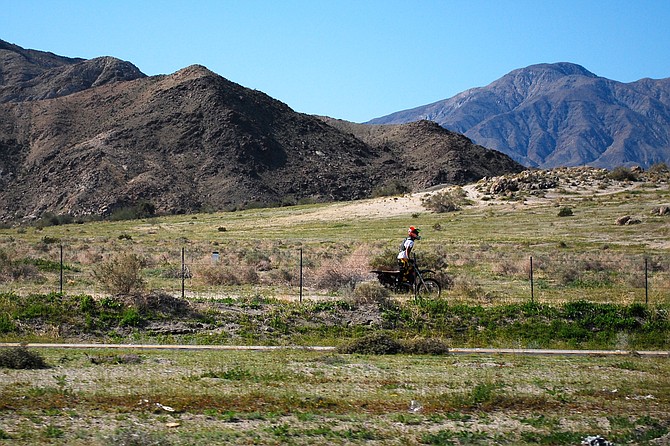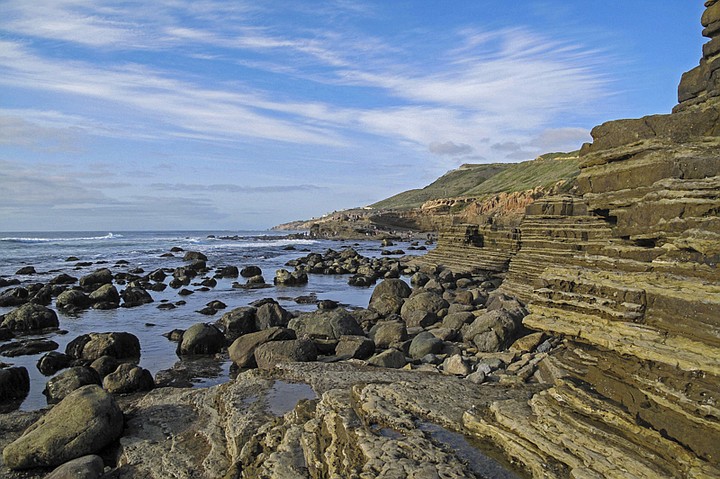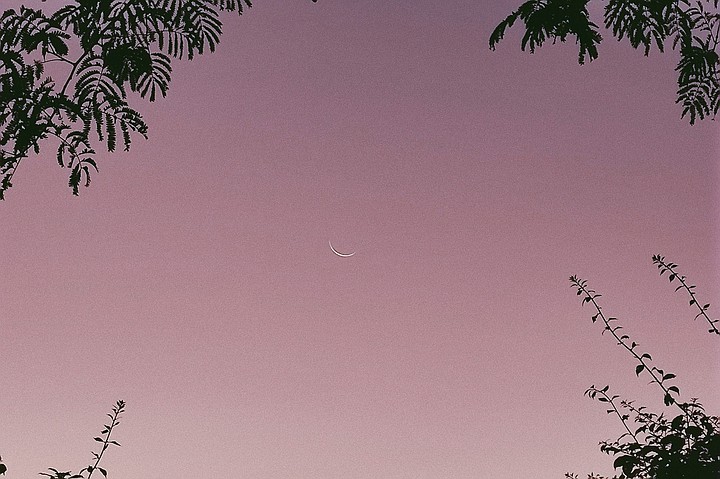 Facebook
Facebook
 X
X
 Instagram
Instagram
 TikTok
TikTok
 Youtube
Youtube

The Annual Green-to-Golden Transition of San Diego’s wild grasslands normally takes place in late March or early April. But this winter season’s late and heavy precipitation triggered a late growth of grasses, so the dry-out phase may be delayed until later this month. North-facing hillsides and canyon slopes retain the green color longer, as they are less exposed to drying sunshine. Locally, most of the wild grasses are naturalized (non-native) annuals, the seeds of which were introduced along with hay and other grains brought in by the Spaniards well over a century ago. Some of the mountain meadows have remnants of native grasses, which remain more or less green almost year-round. These rare native grasslands can be found in certain parts of Cuyamaca Rancho State Park and are more widely distributed at the Santa Rosa Plateau Ecological Reserve near Temecula.

Fremont Cottonwood Trees along the San Diego River in Mission Gorge will show off their best iridescent green foliage this month. The Old Mission Dam parking area on Father Junípero Serra Trail, off Mission Gorge Road (west of Santee), is a good place to begin a stroll on trails near the riverbed. Be careful -- as April temperatures rise, rattlesnakes increasingly will be out and about.

April’s Lowest Tide, dropping to -1.05 feet, is for early risers only: 5:03 am on Friday the 21st. The two highest tides in April (+6.5 feet) occur at 9:44 pm Wednesday the 19th; and at 10:14 pm on Thursday the 20th.

See the Youngest Moon on Thursday April 20th. Starting about 15 minutes after sunset, see if you can detect the new moon just above the west-northwest horizon. You may need to use binoculars or a telescope: the moon will be only 23 hours old. That’s theoretically the youngest moon that it’s possible to see. A New Moon takes place every four weeks, when the moon is between the earth and sun. Seeing a moon within a day of a new phase is very rare.


The Annual Green-to-Golden Transition of San Diego’s wild grasslands normally takes place in late March or early April. But this winter season’s late and heavy precipitation triggered a late growth of grasses, so the dry-out phase may be delayed until later this month. North-facing hillsides and canyon slopes retain the green color longer, as they are less exposed to drying sunshine. Locally, most of the wild grasses are naturalized (non-native) annuals, the seeds of which were introduced along with hay and other grains brought in by the Spaniards well over a century ago. Some of the mountain meadows have remnants of native grasses, which remain more or less green almost year-round. These rare native grasslands can be found in certain parts of Cuyamaca Rancho State Park and are more widely distributed at the Santa Rosa Plateau Ecological Reserve near Temecula.

Fremont Cottonwood Trees along the San Diego River in Mission Gorge will show off their best iridescent green foliage this month. The Old Mission Dam parking area on Father Junípero Serra Trail, off Mission Gorge Road (west of Santee), is a good place to begin a stroll on trails near the riverbed. Be careful -- as April temperatures rise, rattlesnakes increasingly will be out and about.

April’s Lowest Tide, dropping to -1.05 feet, is for early risers only: 5:03 am on Friday the 21st. The two highest tides in April (+6.5 feet) occur at 9:44 pm Wednesday the 19th; and at 10:14 pm on Thursday the 20th.

See the Youngest Moon on Thursday April 20th. Starting about 15 minutes after sunset, see if you can detect the new moon just above the west-northwest horizon. You may need to use binoculars or a telescope: the moon will be only 23 hours old. That’s theoretically the youngest moon that it’s possible to see. A New Moon takes place every four weeks, when the moon is between the earth and sun. Seeing a moon within a day of a new phase is very rare.
Comments